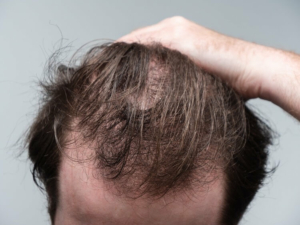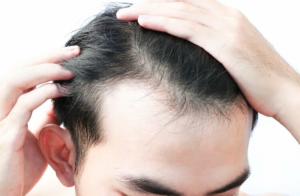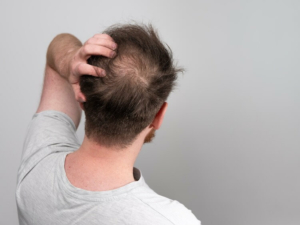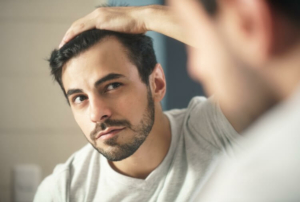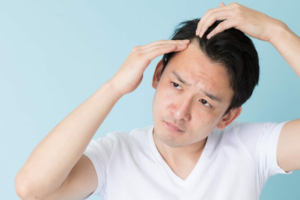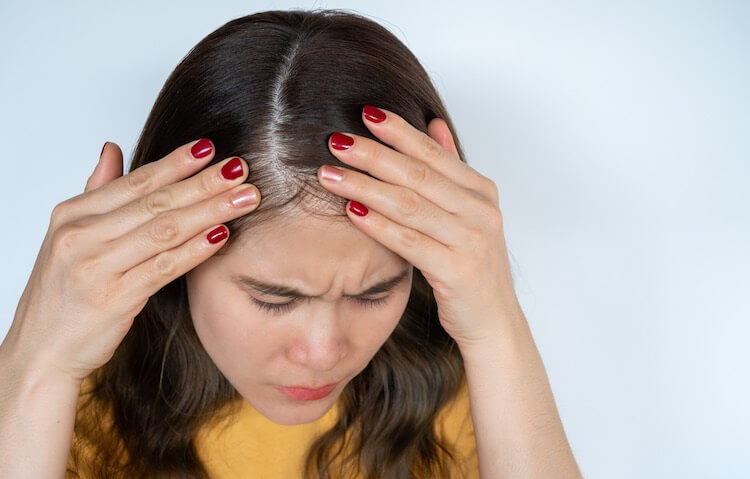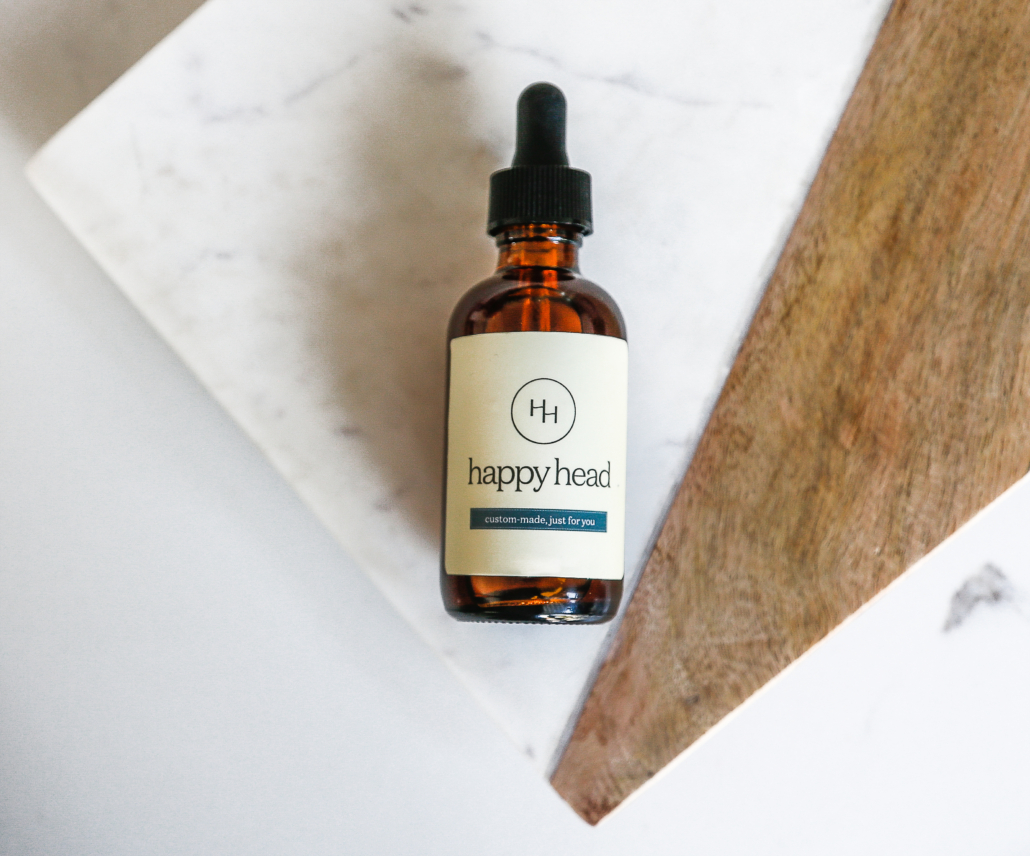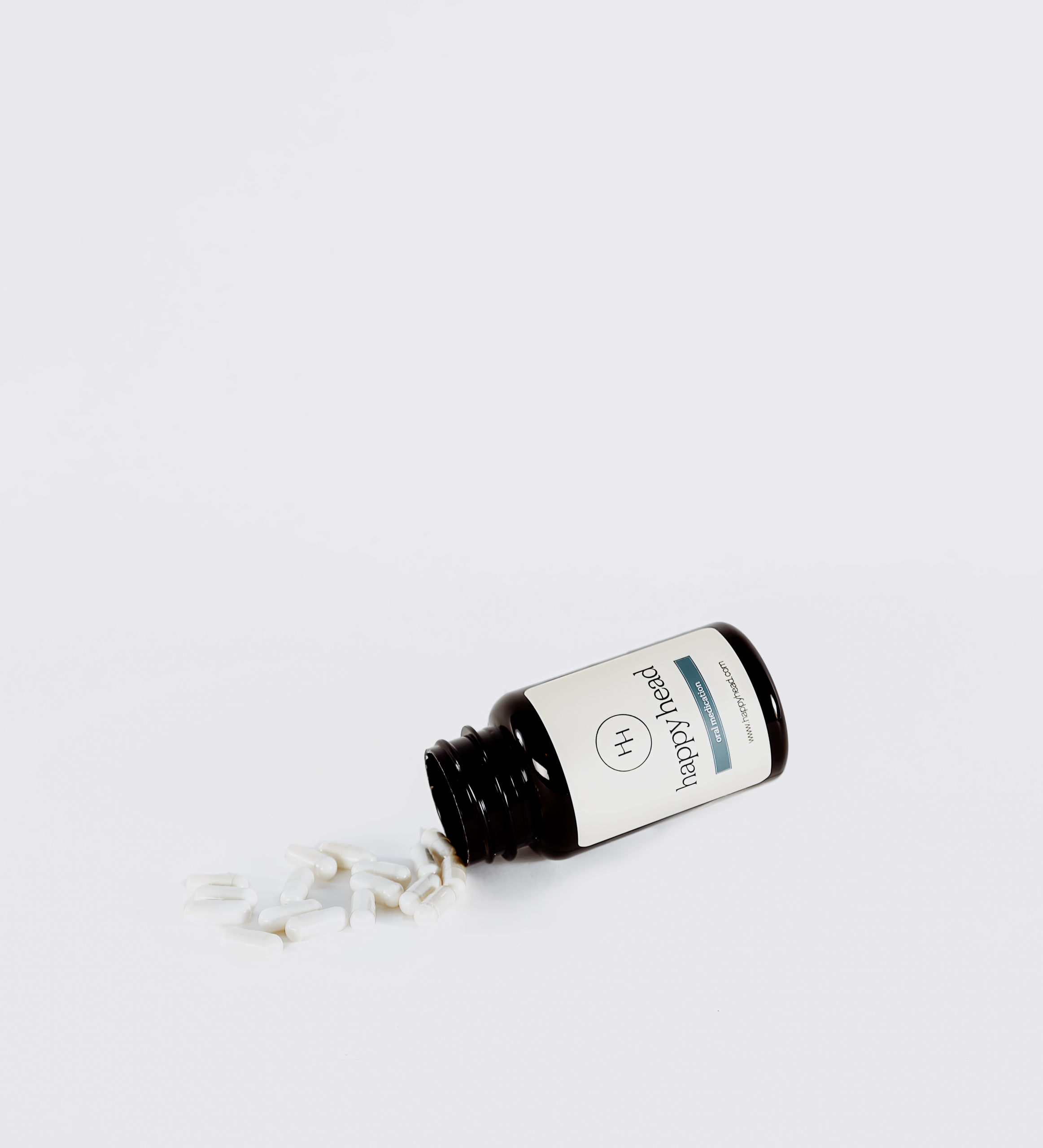What Every Man Should Know About Male Pattern Baldness
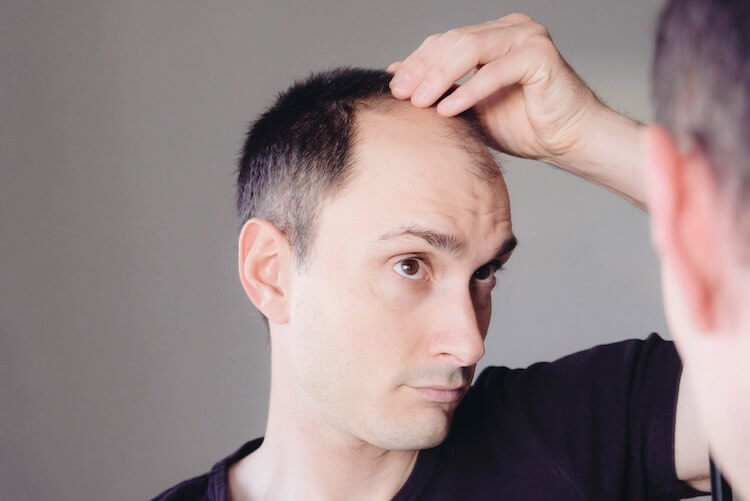
Close your eyes and visualize a middle-aged guy. What do you see? Maybe a few distinguished worry lines? A slight bulge around the middle saying, “Hey, go back to the gym”? A receding hairline or a shaved head? Whoa, stop right there. Do all men go bald? Is that really your fate too?
While it’s true that data indicates over 50 percent of men have extensive hair loss by the age of 50, there are ways to avoid becoming part of that statistic. (01) There are many reasons why men go bald, and more effective treatments are available than ever before. If you’re a guy worried about losing your hair, read on. This one’s for you.
Why Do Men Go Bald?
If you find sacred strands of hair scattered in your sink every time you comb or brush, you may wonder why. Do you have a rare disease? Are you using your cell phone too much? Are there toxins in your water? Most likely not. The explanation is much simpler than you would think.
Most Guys Are Genetically Predisposed to Hair Loss
Genetics is the most common cause of hair loss among men. (02) If a family member on your mother or father’s side has experienced hair loss, you may have inherited a baldness gene that causes male pattern baldness. Let’s talk about what that means.
Male Pattern Baldness is a Type of Alopecia
Because of your genetic make-up, an enzyme called 5a reductase converts testosterone naturally found in your body to a substance called Dihyrotestosterone (DHT). DHT tells your hair follicles, “Hey, there’s an invasion. Close up shop and hunker down.” The hair follicles shrink, and healthy new hair can no longer grow.
What About Genetic Testing?
Are you thinking, “No problem, there’s genetic testing for just about everything these days, right?” If so, it’s true that genetic tests for androgenetic alopecia (aka male pattern baldness) exist. The only catch is that they aren’t quite perfected yet. So, what can you do if you think your hair loss has a genetic link?
First, consult with a licensed dermatologist who specializes in hair loss. If you’re anti-doctor and procedure-phobic, don’t stress. Male pattern baldness has specific hair loss patterns that allows diagnosis without any invasive testing. If it turns out male pattern baldness is causing thinning or recession, many treatment options are available.
Treatment Options for Male Pattern Baldness
The best way to treat male pattern baldness is to hit your scalp from different angles with various medications. One that you’ll want to consider is Rogaine. You’ve probably heard of it before. Rogaine liquid and foam is sold over the counter (OTC) to help open up your hair follicles. The generic version, Minoxidil, is sold by prescription in higher doses than what’s available OTC.
You’ll also want to use a prescription DHT blocker to prevent DHT from being produced in the first place. Finasteride and Dutasteride are the ones most commonly prescribed to men. Finasteride is effective in most men and is used as the first-line treatment. Dutasteride is a bit stronger and can be prescribed if Finasteride isn’t doing the trick. Retinol and cortisone are often added to the mix to improve absorption and prevent irritation.
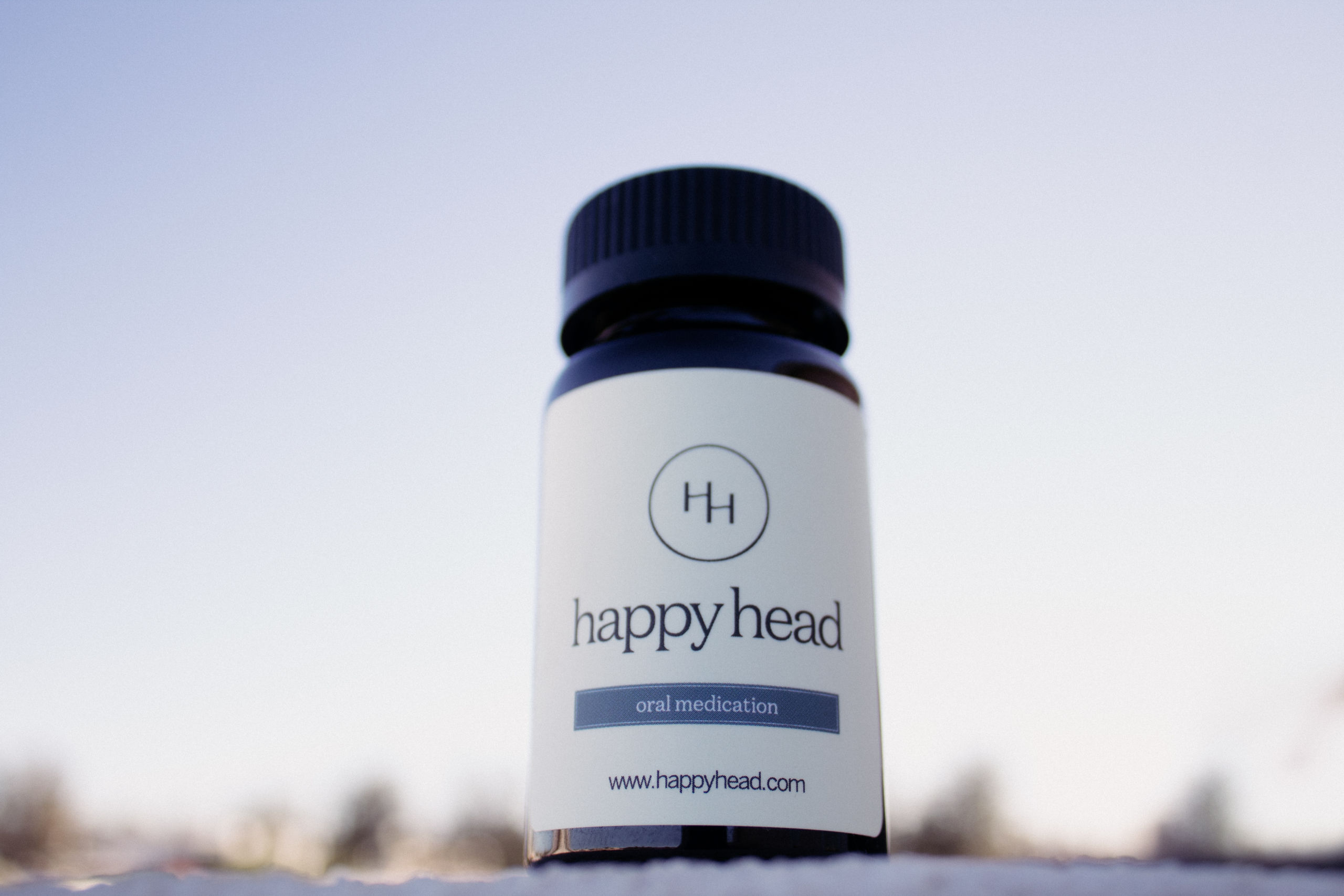
Do Finasteride & Dutasteride Have Undesirable Side Effects?
Finasteride and Dutasteride are both prostate medications prescribed for men with male pattern baldness. Finasteride is FDA-approved and Dutasteride is used off-label. You may have heard friends or family members talking about the medicines. And, you may have rumors about some side effects like impotence that make you nervous.
Don’t worry, though. You don’t have to choose between your hair or your sex life. You can have both. If you’re thinking about taking oral Finasteride or Dutasteride, consider this. The percentage of men who experience side effects is really small. During Finasteride’s clinical trials, less than two percent of men taking the drug experienced side effects. (03)
If you’re worried about becoming one of the two percent, topical Finasteride or Dutasteride may be a good option. Topicals have been proven to be equally effective as oral DHT blockers (04) and don’t carry the same risk of side effects since they work at the scalp and aren’t systemic.
How do Topical Brands Compare?
It’s no great secret that the hair loss industry is booming. Prescription hair loss medications that used to only be available at a pharmacy are now available via telemedicine. Deciding which ones to use can be difficult. Are the formulas the same? Do the brands work differently? To help you answer those questions, Fin vs. Fin recently compared topical hair loss treatments based on active ingredients, ease of application, and price. Check out their review to see how industry leaders stack up.
Although Not as Common, Men Experience Alopecia for Other Reasons
Male pattern baldness accounts for most hair loss among men. However, other conditions can also cause alopecia. A small percentage of men experience alopecia due to autoimmune conditions. Alopecia areata is an autoimmune disease that causes small, round patches of hair loss. Lichen planopilaris can cause recession, smooth white patches, and an itching or burning sensation. It’s important to see your dermatologist for a diagnosis and treatment plan if you’re experiencing hair loss. If you have one of these conditions, early intervention is key to preserving your hair.
Thinning or Balding Can Be Temporary
When your body experiences sudden changes, temporary hair loss called telogen effluvium can occur. Covid, the flu, and having surgery can shock your body and cause hair in the resting state of your hair’s growth process to fall out all at once. Stress can cause the same effect. If continual conflicts at home or work burnout is an issue, finding ways to cope will help. You may also want to get your vitamin levels checked. Vitamin D and iron deficiencies can also lead to temporary hair loss.
So, let’s recap. Even if you are predisposed to balding, there are ways to preserve your hair. Get checked out by your dermatologist to determine the cause and know that treatments are available. If you need advice, we’re here to help. Happy Head has licensed dermatologists in every state who are available to answer your questions. We also offer tested hair growth pills, topicals, shampoo, conditioner, and supplements developed by hair loss specialists Dr. Ben and Sean Behnam.
Resources:
(01) https://pubmed.ncbi.nlm.nih.gov/9865198/
(02) https://pubmed.ncbi.nlm.nih.gov/16127116/
(03) https://pubmed.ncbi.nlm.nih.gov/9951956/
(04) https://www.ncbi.nlm.nih.gov/pmc/articles/PMC7648777/

